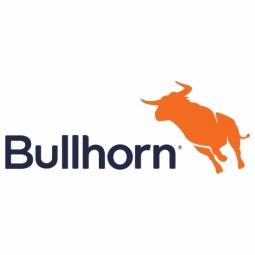Applicable Industries
- Life Sciences
- Pharmaceuticals
Applicable Functions
- Maintenance
- Procurement
Use Cases
- Time Sensitive Networking
Services
- System Integration
About The Customer
Callidus Executive is a hybrid executive search agency and consultancy established in 2010. It specializes in pharmaceuticals and energy recruitment within German-speaking markets. Starting as a two-person recruitment agency, Callidus experienced exponential growth in a short amount of time and currently boasts over a dozen consultants who possess highly specialized and valuable industry knowledge. As a young and agile company, Callidus was in search of an ATS that could match its own speed and potential, and help maintain its lead over the competition.
The Challenge
Callidus Executive, a hybrid executive search agency and consultancy specializing in pharmaceuticals and energy recruitment within German-speaking markets, was facing challenges with its existing applicant tracking system (ATS), Meffert. The software had limited functionality and customization options, and it lacked scalability, making it unsuitable for Callidus' rapidly growing operations. The support provided by Meffert was also unreliable, further complicating the situation. Callidus needed an ATS that could match its speed and potential, and provide a competitive edge in the recruitment industry. The ideal solution would need to accommodate the company's growth and work efficiently even with a larger number of users.
The Solution
Callidus decided to switch to Bullhorn, an ATS/CRM with a solid technology base, global reach, and scalability. Bullhorn's cloud-based solution offered seamless, automatic upgrades, and its APIs allowed Callidus to customize the product to fit their needs. Unlike their previous software, Bullhorn adapted to Callidus' work style, providing a significant benefit. Bullhorn's Marketplace offered a variety of innovative turnkey solutions, which Callidus used to address specific business needs and gain a competitive advantage. The Bullhorn ATS enabled Callidus recruiters to easily access placement metrics and track success. Its reliability and responsiveness allowed Callidus to outpace its competitors with its speed.
Operational Impact
Quantitative Benefit

Case Study missing?
Start adding your own!
Register with your work email and create a new case study profile for your business.
Related Case Studies.

Case Study
Case Study: Pfizer
Pfizer’s high-performance computing software and systems for worldwide research and development support large-scale data analysis, research projects, clinical analytics, and modeling. Pfizer’s computing services are used across the spectrum of research and development efforts, from the deep biological understanding of disease to the design of safe, efficacious therapeutic agents.

Case Study
Fusion Middleware Integration on Cloud for Pharma Major
Customer wanted a real-time, seamless, cloud based integration between the existing on premise and cloud based application using SOA technology on Oracle Fusion Middleware Platform, a Contingent Worker Solution to collect, track, manage and report information for on-boarding, maintenance and off-boarding of contingent workers using a streamlined and Integrated business process, and streamlining of integration to the back-end systems and multiple SaaS applications.

Case Study
Process Control System Support
In many automated production facilities, changes are made to SIMATIC PCS 7 projects on a daily basis, with individual processes often optimised by multiple workers due to shift changes. Documentation is key here, as this keeps workers informed about why a change was made. Furthermore, SIMATIC PCS 7 installations are generally used in locations where documentation is required for audits and certification. The ability to track changes between two software projects is not only an invaluable aid during shift changes, but also when searching for errors or optimising a PCS 7 installation. Every change made to the system is labour-intensive and time-consuming. Moreover, there is also the risk that errors may occur. If a change is saved in the project, then the old version is lost unless a backup copy was created in advance. If no backup was created, it will no longer be possible to return to the previous state if and when programming errors occur. Each backup denotes a version used by the SIMATIC PCS 7 system to operate an installation. To correctly interpret a version, information is required on WHO changed WHAT, WHERE, WHEN and WHY: - Who created the version/who is responsible for the version? - Who released the version? - What was changed in the version i.e. in which block or module of the SIMATIC PCS 7 installation were the changes made? - When was the version created? Is this the latest version or is there a more recent version? - Why were the changes made to the version? If they are part of a regular maintenance cycle, then is the aim to fix an error or to improve production processes? - Is this particular version also the version currently being used in production? The fact that SIMATIC PCS 7 projects use extremely large quantities of data complicates the situation even further, and it can take a long time to load and save information as a result. Without a sustainable strategy for operating a SIMATIC PCS 7 installation, searching for the right software version can become extremely time-consuming and the installation may run inefficiently as a result.

Case Study
ELI LILLY ADOPTS MICROMEDIA’S ALERT NOTIFICATION SYSTEM
Pharmaceutical production is subject to a strict set of enforced rules that must be adhered to and compliance to these standards is critically necessary. Due to the efforts of WIN 911’s strategic partner Micromedia, Lilly was able to adopt an alarm notification infrastructure that integrated smoothly with their existing workflows and emergency hardware and protocols. These raw energy sources enable the industrial process to function: electricity, WIN-911 Software | 4020 South Industrial Drive, Suite 120 | Austin, TX 78744 USA industrial steam, iced water, air mixtures of varying quality. Refrigeration towers, boilers and wastewater are monitored by ALERT. Eli Lilly identified 15000 potential variables, but limitations compelled them to chisel the variable list down to 300. This allowed all major alarms to be covered including pressure, discharge, quantity of waste water discharged,temperature, carbon dioxide content, oxygen & sulphur content, and the water’s pH.









